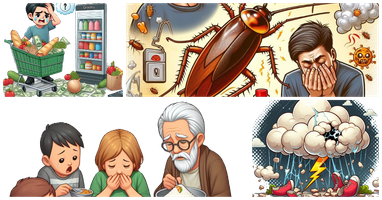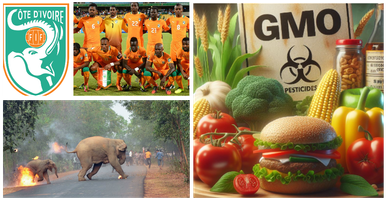

Domestic Food Waste
Domestic food waste refers to the edible food and drinks that are discarded or thrown away by households, typically without being consumed or used. This can include expired or spoiled food, uneaten leftovers, and uneaten portions of meals. According to the United Nations Food and Agriculture Organization (FAO), an estimated one-third of all food produced globally is lost or wasted, with households being a significant contributor to this problem. Domestic food waste can have negative environmental impacts, including contributing to greenhouse gas emissions, landfill waste, and water pollution, as well as wasting the resources used to produce, process, transport, and store the food.

Impact of domestic food waste on households
The well know
Domestic food waste has a significant impact on households, resulting in financial losses, increased grocery bills, and environmental consequences. According to the United Nations Food and Agriculture Organization, one-third of all food produced globally is lost or wasted, which translates to approximately 1.3 billion tonnes of food waste annually. In the United States alone, it is estimated that households throw away around 40% of the food they purchase, amounting to an average of $1,500 per year per household. This not only wastes resources such as water, energy, and labor but also contributes to greenhouse gas emissions, as food waste decomposing in landfills produces methane, a potent greenhouse gas. Additionally, reducing food waste can help alleviate hunger and poverty by redirecting surplus food to those in need.
Moreover, households can also experience:
1. Higher waste disposal costs from municipalities or service providers.
2. Uncomfortable smells caused by food decay & poor hygienic conditions.
3. Increase in unwanted pests (in cases where disposal services are non-existent, inefficient, or operate infrequently). With increase in these pests, comes the increase likelihood of Illnesses from vector pest like cockroaches.
4. Cost associated to pest control & prevention.
5. Illness caused by unwanted-vector pest like cockroaches.
Do you know ?
UN, USA and EU targets to address food waste
The United Nations, United States, and European Union have set targets to reduce food waste. The UN's Sustainable Development Goal 12.3 aims to halve per capita global food waste at the retail and consumer levels and reduce food losses along production and supply chains, all by 2030. The EU has set a goal to reduce food waste by 50% by 2030, while the US has aimed to reduce food waste by 50% in the next 15 years (2030). Additionally, the European Commission has launched the "Save One Third" campaign to raise awareness about food waste and encourage individuals to reduce their own food waste.

Endangered species
Food-induced climate change has severe implications for endangered species, as changes in global temperature and precipitation patterns alter the distribution and availability of their primary food sources. For example, polar bears, whose primary diet consists of seals and fish, are facing reduced access to their prey due to melting sea ice. Similarly, coral reefs, which are crucial nurseries for many fish species, are experiencing mass bleaching events caused by warmer ocean temperatures, leading to declines in fish populations. Additionally, changes in plant communities can have cascading effects on herbivores and omnivores that rely on these plants for food, ultimately threatening the survival of endangered species.
+Green makes the case of some of these species

Endangered places & Eco-systems
Food-induced climate change is having a devastating impact on fragile ecosystems, monuments, and recreational sites around the world. As greenhouse gas emissions from agriculture, transportation, and production increase, it's causing rapid changes in temperature and precipitation patterns, leading to more frequent and severe droughts, floods, and heatwaves. This can damage and destroy vulnerable ecosystems, such as coral reefs and wetlands, which are crucial for biodiversity and support millions of people's livelihoods. Additionally, rising temperatures can also cause erosion and damage to historical monuments and cultural heritage sites, as well as disrupt popular recreational activities like hiking and skiing. The consequences of inaction will only worsen over time, making it imperative for individuals to adopt sustainable food systems and reduce their carbon footprint to mitigate the effects of climate change.

Consequences of loss of species & bio-diversity
Some people frequently fail to notice or comprehend the significance of species extinction or the loss of biodiversity, but here are few reasons why we should be alarmed:
1. Loss of national symbols and insignia, such as coats of arms and team mascots.
2. More foods grown using pesticides and genetically modified organisms (GMOs) due to the extinction of other natural pest control species (health issues).
3. Conflicts between humans and wildlife have increased as a result of wild creatures vying for resources in human settlements.
Follow Us
(c) 2024 +Green, All rights reserved
